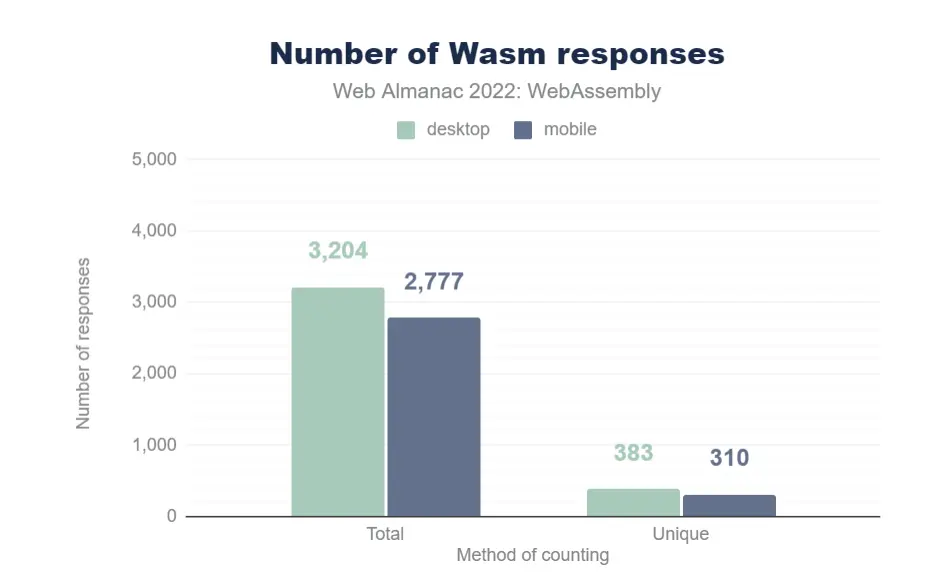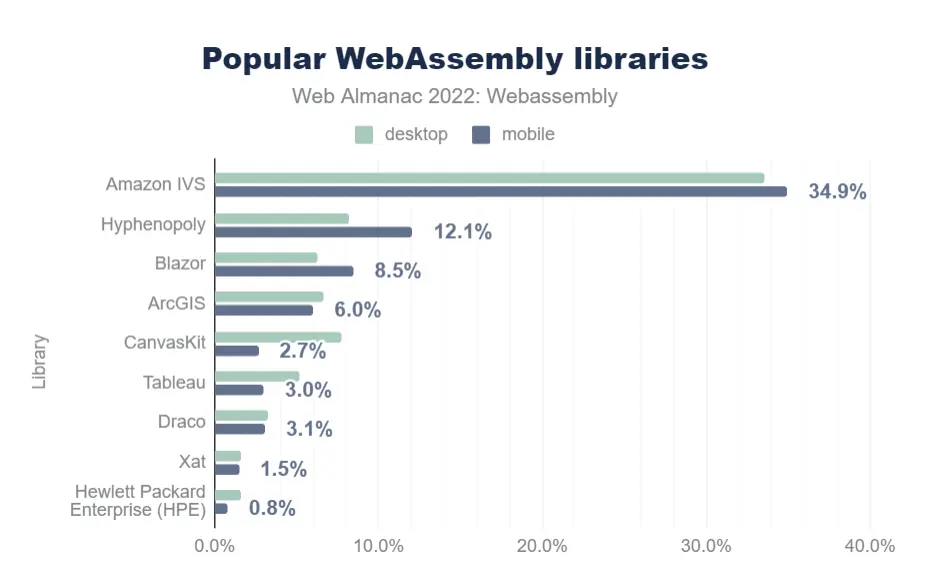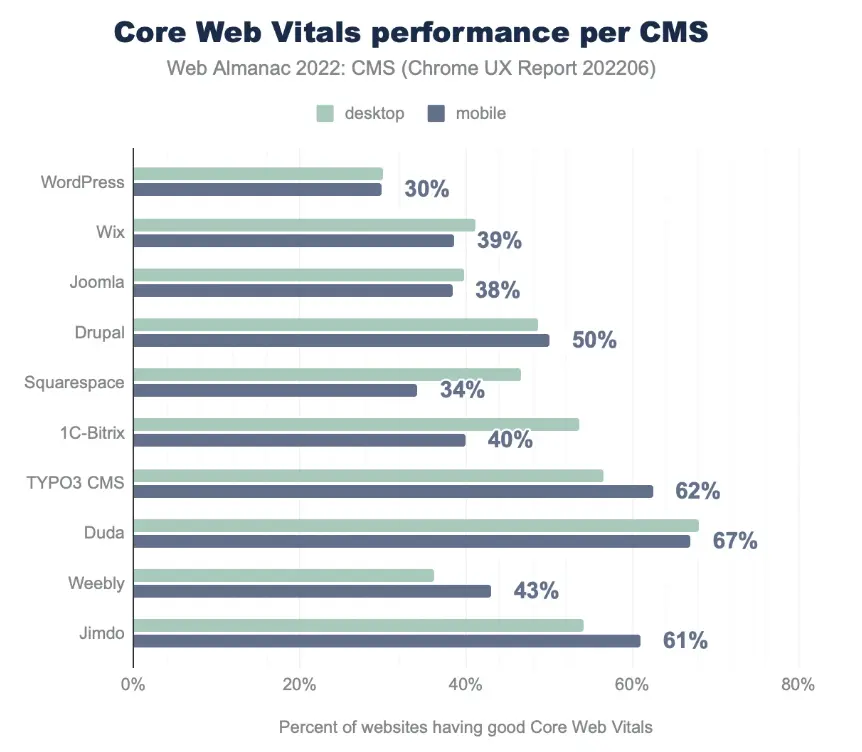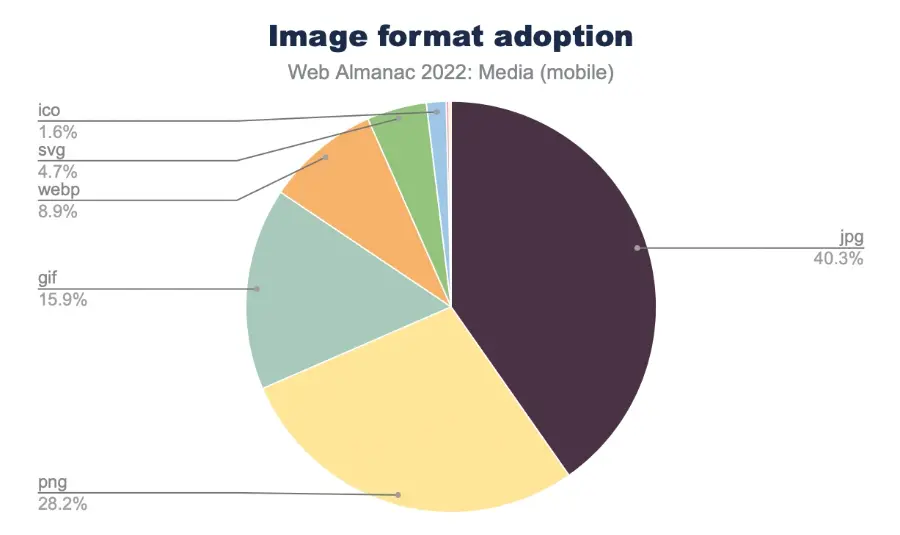The HTTP Archive has released a 2022 annual State of the Web report, Web Almanac, which combines raw statistics and trends from the HTTP Archive with the expertise of the Web community; it contains 22 chapters covering all aspects of page content, user experience, publishing and distribution.
HTTP Archive is a community-run project that has been studying how the Web is built since 2010; using WebPageTest and Lighthouse, metadata from approximately 8.4 million websites are tested monthly and analyzed in the public BigQuery database. These are the sites analyzed for Google’s Chrome User Experience Report, which is based on only the most active sites and covers sites that are publicly accessible and popular enough. 2022 Web Almanac is based on the June 2022 dataset.
One of the conclusions was that “WebAssembly is not widely used and we are not seeing an increase in usage, but a moderate contraction”. The report notes that the number of wasm (compiled WebAssembly code) in web pages is small. Researchers found 3,204 confirmed WebAssembly requests on the desktop and 2,777 on mobile. These modules were used in 2,524 domains on desktop and 2,216 domains on mobile, corresponding to 0.06% and 0.04% of all their domains, respectively.

By far the largest area of WebAssembly adoption is Amazon IVS (Amazon Interactive Video Service), used as a video codec, allowing consistent video decoding independent of the user’s browser’s codec support. The second is an npm module, Hyphenopoly, which provides a polyfill for CSS hyphenation; the core algorithm is provided by the WebAssembly module and therefore has a small footprint and stable performance.

Researchers believe that WebAssembly is a niche web technology for the Web, and likely always will be. While WebAssembly brings a wide range of languages to the Web such as C++, Rust, Go, AssemblyScript, C# and others, these languages are not yet a substitute for JavaScript, and for the vast majority of Web sites, their content is relatively static and moderately interactive. “There is simply no compelling reason to use WebAssembly”. But WebAssembly is already adding value to the Web, and there are many Web applications that have benefited greatly from the technology.
In addition the report shows that CMS adoption is stable at 45-47% of desktop and mobile sites. There was little but significant change in the popularity of the different systems, with WordPress continuing to grow." Compared to the same period last year, Drupal and Joomla continue to lose market share, while Squarespace remains stable and Wix grows. WordPress continues to rise, with mobile up 1.4% over 2021 and desktop up 0.2% over 2021.

But WordPress is one of the worst performing CMS systems on average, although it depends on how it is implemented and what plugins are used. WordPress expert Jonathan Wold reports in his analysis that only 30% of WordPress sites achieve a Google Core Web Vitals score of “passing score”. Specifically, a passing grade is a LCP (Largest Contentful Paint) of 2.5 seconds or less, a FID (First Input Delay) of 100ms or less, and a CLS (Cumulative Layout Shift) level of 0.1 or less.
As well as some bad habits and old technologies that are hurting web performance: such as using old and inefficient image formats, where WebP or better yet AVIF is the most efficient, but PNG, JPG and GIF are still preferred; or relying on too many third-party scripts that slow down web pages; or using the deprecated document.write API for dynamic content, or blocking page loads of embedded YouTube videos.

More details can be found in the full report.